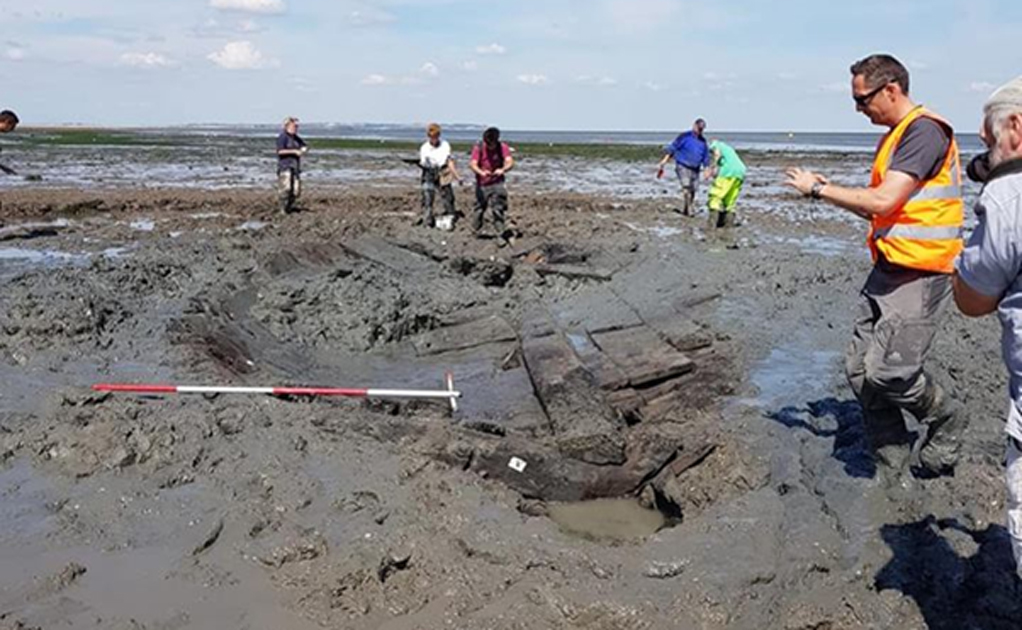Authorities Give Protection to a Rare 16th Century Tudor Shipwreck Found on an English Beach
British experts have announced an amazing discovery on a beach in Kent. A group of amateur archaeologists has found a Tudor shipwreck that is up to five hundred years old. The find was totally unexpected, and it is being hailed as one of the most important maritime discoveries in recent years in England. The discovery of the shipwreck on a beach is a unique one and it has now been offered protected status by Department for Digital, Culture, Media and Sport.
The growth of Tudor naval power
The shipwreck is dated to the Tudor period, one of the most important eras in the history of England. The period is best known for the reigns of Henry VIII and Elizabeth I, but was also a crucial period in the development of English naval power. The Tudors were central to the growth of English maritime power which laid the basis for the British Empire.
There have been very few archaeological finds related to the Tudor navy. This is because many ships sank at sea and can only be identified by trained divers. One of the few ships excavated from the Tudor period, is the Mary Rose, a famous battleship in Henry VIII’s navy, that was sunk in a sea battle with the French in 1545.

Volunteers mark the outline of the wreck on Tankerton Beach. (Image: © Historic England)
The shipwreck discovered after centuries
The remarkable discovery was made on some mudflats, on Tankerton Beach, near Whitstable in Kent. It was discovered by some local amateur archaeologists, who call their group Timescapes. They were searching the beach for the remains of destroyed pillboxes from WWII. According to the Independent, the director of the archaeologists, stated that ‘adjacent to a lump of exploded concrete, we were amazed to see the timbers of a ship appearing out of the sand’. The group immediately reported the find to the public body ‘Historic England’.
The skeleton of the boat was in a remarkable condition as it has been preserved in the mud and sand. Experts from Wessex Archaeology took samples of wood from the wreck for testing and these revealed that one board came from a tree that was cut-down sometime around 1531 in southern England. The Aol website has reported that the archaeologists have also ‘dug two trenches revealing well-preserved hull timbers’. Visitors to the Kent beach can catch a glimpse of the historic find at low tide.
- Gold pieces retrieved from Thames River most likely part of elaborate Tudor era hat
- Scientists Unravel Secrets of a Hidden Room Within a Hidden Room in English Tudor Mansion
- Bloody Mary: The Marriage, Reign, and Death of a Queen of England

Well preserved timbers have been excavated and some dated to 1531. (Image: © Historic England)
Archaeologists believe that based on the design of the hull's construction it is a sixteenth century or early seventeenth-century merchant ship. It was a single-mast vessel and it was up to 200 tons in size. Its name is not known. Part of the rigging and a wooden barrel have also been found very well-preserved in the mudflats. Sky News reports that the wreck ‘measures over 12 meters long and five meters wide (40ft by 16ft)’.The find is important because ordinary commercial ships are far less likely to have survived than great ships such as the Mary Rose.
The excavation of the shipwreck will continue. Archaeologists are excited about working on a vessel that is not sunk and at the bottom of deep water. There is speculation that the ship was involved in the textile trade before it was abandoned on the mudflats. The wreck is still being excavated and it is hoped that evidence of its cargo will be found. It is also hoped that evidence will be found showing something of the sailors’ life at sea.
- The Blooming and Fragrant History of Roses
- Secret Letters, Including 400-Year-Old Shopping List, Found in Historic Mansion in England
- The Real Life Game of Thrones Part Two: War of the Roses

The boat is thought to have been a merchant ship, possibly carrying textiles. (Image: Wessex Archaeology)
Recognized for Protection
The importance of the find can be seen by the fact that the UK Department for Digital, Culture, Media, and Sport, have promptly scheduled the shipwreck for protection. The discovery of the Tudor ship is the second in the area in recent months. In nearby Camber Sands, a merchant ship, of North American origin, from the 18 th century was also discovered, and it is being actively considered for protection.
Experts believe that the find can throw a unique light on the maritime history of England. The discovery of the shipwreck can also help us to understand the evolution of the design of ships. It is also expected that the ship can allow archaeologists to understand more about mariners’ life at sea in the Early Modern Period. There is also the possibility that the discovery shows that there could be many more shipwrecks preserved in mudflats around the British Isles.
Top image: The shipwreck found on Tankerton beach last year is now protected. Image: Wessex Archaeology
By Ed Whelan



















